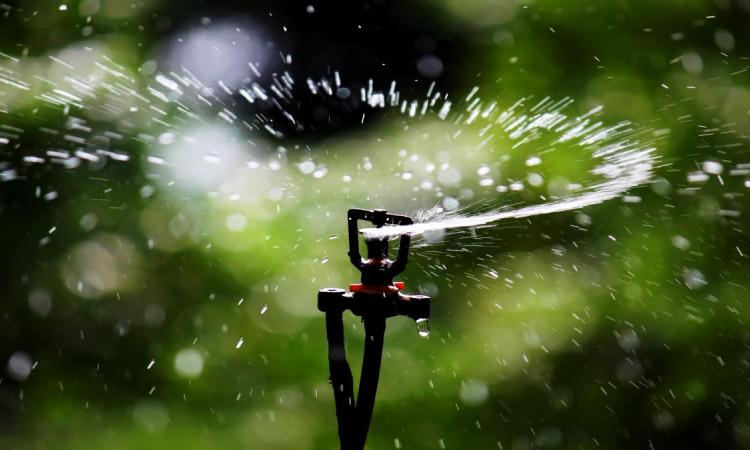
Micro irrigation in India
Efficiency of water use in agriculture in India is very low at 25 and 35 per cent (maximum 40 and 45 per cent). This is due to the widespread practice of conventional flood irrigation techniques for agriculture in the country. The micro-irrigation (MI) potential in India is 69.5 million hectares (Government of India, 2004) informs this paper titled 'Water-saving and economic gains of micro irrigation adoption scheme “Per Drop More Crop”: A case of sugarcane, banana and cotton cultivation in Maharashtra' published in Economic Affairs
Prior to 2006, the central government provided financial assistance to the state governments to enable them to provide subsidy for installation of micro irrigation systems. In 2006, the Government of India (GoI) implemented a centrally sponsored scheme for promoting micro irrigation, through which direct assistance to farmers was provided in the form of a grant. Thus the central government and the state government bore 50 percent and 10 percent of the cost respectively, while the rest was borne by the farmer/beneficiary. However, till 2014 only 7 million hectares was brought under micro irrigation which indicated that only 10 percent of the potential was realised.
The Pradhan Mantri Krishi Sinchayee Yojana (PMKSY) was launched in 2015 and the Department of Agriculture, Cooperation & Farmers Welfare (DAC &F W), GoI implemented a Centrally Sponsored Scheme of ‘Per Drop More Crop’ component from 2015-16 in all the Indian states. The scheme focuses on enhancing water use efficiency at the farm level through MI viz. drip and sprinkler irrigation systems.
The Government of India introduced the PMKSY:PDMC scheme through which farmers can avail of subsidies for adopting MI. The Government subsidy plays an important role in incentivising the farmers to invest in the drip irrigation system. However, there are certain constraints experienced by farmers in availing the subsidy as proposed in the PMKSY: PDMC. There is also a frequent delay from State governments in issuance of notifications and guidelines which affect the timely disbursement of the subsidy, and tends to dissuade farmers from applying for the same (Mehta, 2021). Thus, it is essential to check the economic viability of drip irrigation adoption with and without subsidy.
Micro irrigation in Maharashtra
The paper discusses the findings of a study that estimates the savings in water, electricity, and economic gains of the micro irrigation adoption scheme “Per Drop More Crop” of the Government of India for the cultivation of three crops, namely, sugarcane, banana, and cotton in selected districts of Maharashtra (India)
Maharashtra is a water stressed state with frequent droughts and fast declining ground water levels. Agriculture is the largest user of water in Maharashtra, which consumes more than 80% of the water resources with only 18 percent of the gross cropped area in the state being irrigated. A large part of the water resources of the state are used for sugarcane and horticultural crops, thus causing a strain on the limited availability of water. Therefore, expansion of area under micro-irrigation and enhancing artificial groundwater recharge structures are the policy priority of the Government of Maharashtra.
This paper explores the input usage, returns and the viability of drip irrigation adoption among the sugarcane, banana, and cotton growers within the PDMC-PMKSY scheme in Maharashtra. The paper examines (a) yields and net returns of sample farmers before and after the adoption of drip irrigation; (b) water, electricity and cost savings in various inputs of sample crop cultivation; (c) economic viability of drip investment of sample crops with and without capital subsidy.
Data was collected from 116 farm households (52 from Pune and 64 from Jalgaon district of Maharashtra) . Secondary data was collected from various governmental sources like Office of the Commissioner of Agriculture, Pune, Maharashtra, Office of District Agriculture Officer, Pune and Jalgaon districts.
The study found that:
The yields of farmers increased
The per hectare yield of banana, sugarcane, and cotton increased by 73 percent, 36 percent and 80 percent, respectively.
Power usage decreased
The power usage for irrigation per hectare reduced by approximately half for banana and sugarcane and 86 percent for cotton.
Water requirement for drip irrigation was substantially low
Though the number of irrigations used with drip method of cultivation increased substantially across all the three crops, the number of hours used for each irrigation was lower in drip method than that of flood irrigated method.
The total water consumption (measured in HP-hours) per hectare for sugarcane, banana, and cotton with drip irrigation was about 56.5 percent, 60 percent and 46 percent lower as compared to without drip irrigation. However, it is not a sure-shot strategy to conserve water.
Drip irrigation was economically viable among farmers
Drip irrigation benefitted farmers and was found to be economically viable even without subsidy for commercial crops like sugarcane, cotton and banana.
Interaction with farmers revealed that the marginal and small farmers need of financial assistance to deal with increasing cost of cultivation. Thus, the government must continue to promote the usage of drip technology through extension services as well as providing subsidy, argues the paper.
/articles/economic-viability-drip-irrigation-maharashtra